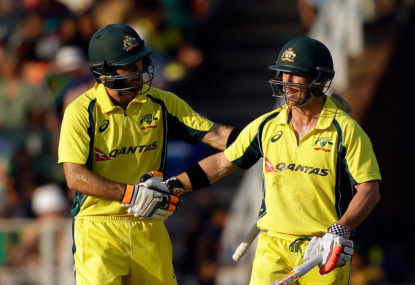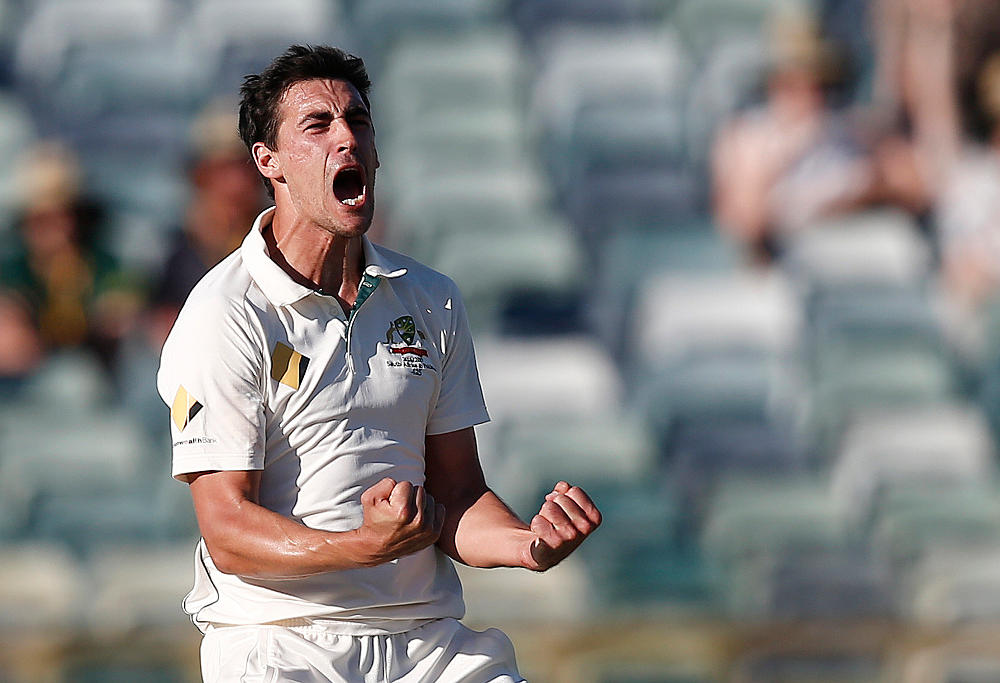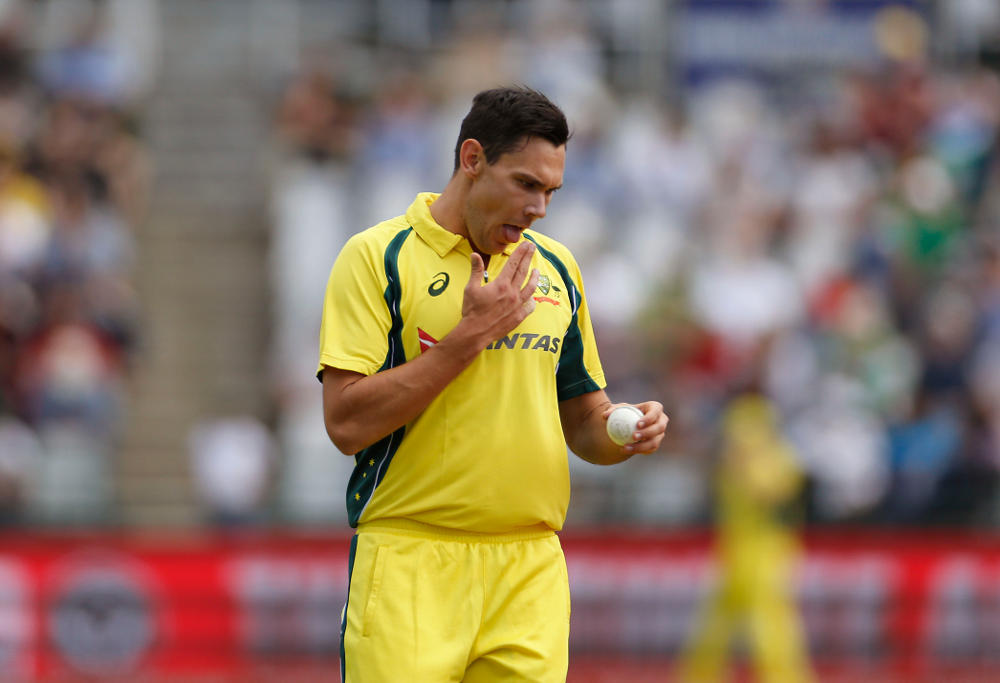WATCH; IPL bowler fuming after getting robbed of near-certain wicket by... Spider-Cam
Harshal Patel was not a happy man!

There have been plenty of highs and lows for followers of Australian cricket to negotiate in 2016.
Between humiliating losses and encouraging wins, we’ve really run the gauntlet of cricket success and failure this year.
Here’s my look back at the year that was.
Before arriving in Australia late last year, the Kiwis had gone unbeaten in seven consecutive Test series, beating India, Sri Lanka and West Indies, and drawing series against England, Pakistan and Bangladesh.
The Kiwis boasted a settled and talented side, while Australia had just lost five experienced cricketers to retirement.
Many fans and pundits rated New Zealand a big chance to beat Australia on the road, and firm favourites to triumph in their return series at home. By the time Australia landed in New Zealand in February this year they were on a roll having thumped the Kiwis and then the West Indies in home series.
There were, however, still doubts about their ability to flourish outside of Australia. The tourists responded in emphatic style, humiliating the Kiwis on their home turf. In the opening Test, Australia rolled New Zealand for 183 on Day 1 before churning out a monster total of 562 en route to an innings win.
The second Test was similarly lopsided as Australia outbatted and outbowled the Kiwis to cruise to a seven-wicket win.
The 4-0 home-and-away result was a remarkable achievement for such a green Australian lineup. It proved to be a false dawn, however, as we learned months later in Sri Lanka.

Mitchell Starc started 2016 as the world’s best limited overs bowler but an underperforming red ball cricketer. It seemed to be a matter of time before he would realise his talent in Tests. That didn’t stop Australian fans from growing impatient of waiting for this moment.
By year’s end the flashes of excellence we’d seen from Starc in the longest format became a far more regular occurrence. In concert with the wonderfully precise Josh Hazlewood, Starc formed an elite new ball partnership.
Hazlewood had overshadowed Starc in 2015 en route to winning a spot in the ICC Test Team of the Year in just his first full year of international cricket.
Starc stood out like a beacon amid the burning wreckage of Australia’s disastrous tour of Sri Lanka. His 24 wickets at an average of 15 in three Tests was one of the finest performances ever seen in Asia by a visiting quick.
In his breakout year in Test cricket, Starc finished in the top 10 wicket takers in the format, despite playing far less matches than the likes of Ravi Ashwin, Stuart Broad, James Anderson and Chris Woakes.
Humiliating, shocking, disgraceful. The adjectives were harsh and numerous in descriptions of Australia’s 3-0 Test series loss in Sri Lanka mid-year. Australia entered that series as favourites with the bookies and there were few cricket pundits worldwide who tipped Sri Lanka to win, let alone in dominant fashion.
Australia had a phenomenal Test record against Sri Lanka, who had beaten the Aussies just once in 29 Tests in history. It looked as though this ascendancy would continue when Australia grabbed a commanding position midway through the first Test.
Having been rolled for just 116 in their first innings, Sri Lanka fell to 3-45 in their second dig, still 41 runs shy of making Australia bat again. A win was there for the taking for Australia.
Then Kusal Mendis produced an extraordinary 176 and the whole series turned on its head. Australia slumped to a sequence of batting collapses in their most embarrassing batting display across a series in recent memory.

Where Australia’s Test hammering in Sri Lanka was galling because they fielded a full-strength team, their 5-0 ODI defeat in South Africa was comical because of the ridiculously-weak bowling attack they chose.
Absent were pacemen Mitchell Starc, Josh Hazlewood and James Faulkner who had formed the backbone of Australia’s pace unit as they won the 2015 World Cup.
In their place were a trio of ODI debutants with domestic 50-over records which ranged from middling to poor. Together Daniel Worrall, Chris Tremain and Joe Mennie had the awful figures of 10 wickets at an average of 49 in the previous Matador BBQs One Day Cup.
They joined Victorian seamer Scott Boland who, to that point, had looked way out of his depth in his ODI career, averaging 57 after ten matches.
Before the series against the Proteas began I dubbed Australia’s pace attack the weakest it had ever fielded in ODIs. That was one prediction I didn’t mess up, with Australia’s bowling lineup getting mauled again and again by South Africa.
That aforementioned pace quartet combined to take 13 wickets at 53, while conceding a whopping 6.7 runs per over.
To clean up this mess Australia’s batting needed to be supreme. It was not. The 5-0 loss did, however, serve a purpose for Australia. It seems to have reminded the selectors that they cannot pick any random 11 Australian players and expect to remain a quality ODI outfit.
When New Zealand arrived for the ODIs this summer they encountered a full-strength Australian side keen for redemption. It was a bloodbath. The real Aussies were back, but it still wasn’t sufficient to erase the memories of the debacle in South Africa.